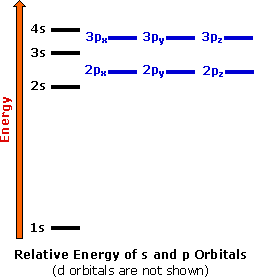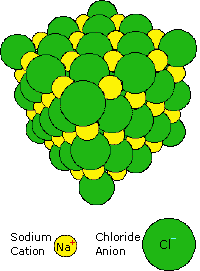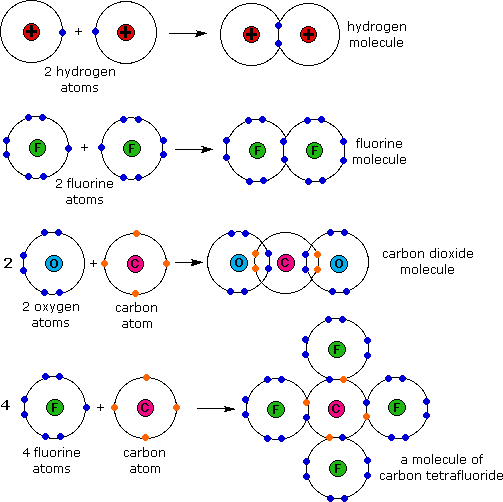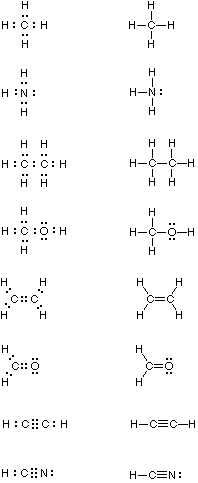Organic Chemistry Text Book (CHEM 3401 and 3402)
- Home
-
Chapter 1: A Review of General Chemistry
- 1.1 Introduction to Organic Chemistry
- 1.2 Electrons, Bonds, and Lewis Structures
- 1.3 Identifying Formal Charges
- 1.4 Atomic Orbitals
- 1.5 Valence Bond Theory
- 1.6 Molecular Orbital Theory/Hybridization
- 1.7 VSEPR Theory: Predicting Geometry
- 1.8 Dipole Moments and Molecular Polarity
- 1.9 Intermolecular Forces and Physical Properties
- Problem Set
- Videos for chapter 1
- Chapter 2: Molecular Representations Toggle Dropdown
- Chapter 3: Acids and Bases Toggle Dropdown
- Chapter 4: Alkanes and Cycloalkanes Toggle Dropdown
- Chapter 5: Stereochemistry Toggle Dropdown
- Chapter 6: Chemical Reactivity and Mechanisms Toggle Dropdown
- Chapter 7: Substitution Reactions Toggle Dropdown
-
Chapter 8: Addition Reactions of Alkenes
Toggle Dropdown
- 8.1 Introduction of Addition Reactions
- 8.1 Nomenclature of Alkenes
- 8.2 Hydrohalogenation of Alkenes
- 8.3 Hydration, Hydroboration, and Oxymercuration of Alkenes
- 8.4 Hydrogenation of Alkenes
- 8.5 Halogenation of Alkenes
- 8.6 Dihydroxylation, Epoxidation, and Ozonolysis of Alkenes
- Problem Set
- Chapter 8 Videos
- Chapter 9: Alkynes Toggle Dropdown
- Chapter 10: Radicals Toggle Dropdown
- Chapter 11: Synthesis Toggle Dropdown
- Problem Sets Organic Chemistry I (CHEM 3401)
-
Chapter 12: Alcohols and Phenols
Toggle Dropdown
- 12.1 Alcohol Structure
- 12.2 Solubility
- 12.3 Boiling Point & Melting Point
- 12.4 Nomenclature
- 12.5 Alcohol Acidity
- 12.6 Reactions of Alcohols and Phenols
- 12.6.1 Substitution of the Hydroxyl Hydrogen
- 12.6.2 Nucleophilic Substitution of the Hydroxyl Group
- 12.6.3 Elimination Reactions of Alcohols
- 12.6.4 Oxidation Reactions of Alcohols
- 12.6.5 Reactions of Phenols
- 12.7 Practice Problems
- 12.7.1 Alcohol Nomenclature 1
- 12.7.2 Alcohol Nomenclature 2
- 12.7.3 Alcohol Nomenclature 3
- 12.7.4 Formation of Carbonyl Compounds
- 12.7.5 Functional Relationships of Alcohols
- 12.7.6 Reactions of Alcohols & Phenols
- 12.7.7 Alcohol Reactions
- Chapter 13: Ethers and Epoxides Toggle Dropdown
-
Chapter 14: Infrared Spectroscopy and Mass Spectrometry
Toggle Dropdown
- 14.1 Introduction fo Molecular Spectroscopy
- 14.2 Infrared Spectroscopy
- 14.2.1 Introduction
- 14.2.2 Vibrational Spectroscopy
- 14.2.3 Group Frequencies
- 14.2.4 Table of Characteristic IR Frequencies
- 14.3 Mass Spectrometry
- 14.3.1 The Mass Spectrometer
- 14.3.2 Characteristics of Mass Spectra
- 14.3.3 Isotopes
- 14.3.4 Fragmentation Patterns
- 14.3.5 High Resolution Spectra
- 14.3.6 MS Practice Problems
- 14.3.6a Problem 1
- 14.3.6b Problem 2
- 14.3.6c Problem 3
- 14.3.6d Problem 4
- 14.3.6e Problem 5
- 14.3.6f Problem 6
- 14.3.6g Problem 7
- 14.3.6h Problem 8
-
Chapter 15: Nuclear Magnetic Resonance Spectroscopy and UV-Visible Spectroscopy
Toggle Dropdown
- 15.1 Nuclear Magnetic Resonance Spectroscopy
- 15.1.1 Background
- 15.1.2 Proton NMR Spectroscopy
- 15.1.2a Introduction to Proton NMR Spectroscopy
- 15.1.2b Chemical Shift
- 15.1.2c Signal Strength
- 15.1.2d Hydroxyl Proton Exchange and the Influence of Hydrogen Bonding
- 15.1.2e Pi-Electron Functions
- 15.1.2f Solvent Effects
- 15.1.2g Spin-Spin Interactions
- 15.1.2h Examples
- 15.1.3 Carbon NMR Spectroscopy
- 15.1.4 NMR Practice Problems
- 15.1.4a Problem 1
- 15.1.4b Problem 2
- 15.1.4c Problem 3
- 15.1.4d Problem 4
- 15.1.4e Problem 5
- 15.1.4f Problem 6
- 15.1.4g Problem 7
- 15.1.4h Problem 8
- 15.1.4i Problem 9
- 15.1.4j Problem 10
- 15.1.5 Table of Proton NMR Shifts
- 15.1.6 Table of Carbon NMR Shifts
- 15.2 UV-Visible Spectroscopy
- 15.2.1 Background
- 15.2.2 The Electromagnetic Spectrum
- 15.2.3 UV-Visible Absorption Spectra
- 15.2.4 The Importance of Conjugation
- 15.3 Spectroscopy Practice Problems
- Chapter 16: Conjugated Pi Systems and Pericyclic Reactions Toggle Dropdown
-
Chapter 17: Aromatic Compounds
Toggle Dropdown
- 17.1 Aromaticity
- 17.1.1 Benzene
- 17.1.2 Fused Ring Compounds
- 17.1.3 Other Aromatic Compounds
- 17.1.4 Antiaromaticity
- 17.1.5 Practice Problems
- 17.1.5a Problem 1
- 17.1.5b Problem 2
- 17.2 Reactions of Substituent Groups
- 17.2.1 Oxidation of Alkyl Side-Chains
- 17.2.2 Bromination of Alkyl Side-Chains
- 17.2.3 Reduction of Nitro Groups
- Chapter 17 Videos
-
Chapter 18: Aromatic Substitution Reactions
Toggle Dropdown
- 18.1 Electrophilic Aromatic Substitution Reactions
- 18.2 Electrophilic Aromatic Substitution Mechanism
- 18.3 Electrophilic Aromatic Substitution Activation/Deactivation and Orientation
- 18.4 Electrophilic Substitution of Disubstituted Benzene Rings
- 18.5 Practice Problems
- 18.5.1 Problem 1
- 18.5.2 Problem 2
- 18.5.3 Problem 3
- 18.5.4 Problem 4
- 18.5.5 Problem 5
- 18.5.6 Problem 6
- 18.5.7 Problem 7
- Chapter 18 Videos
-
Chapter 19: Aldehydes and Ketones
Toggle Dropdown
- 19.1 Nomenclature
- 19.2 Preparation of Aldehydes and Ketones
- 19.3 Properties of Aldehydes and Ketones
- 19.4 Reactions of Aldehydes and Ketones
- 19.4.1 Addition Reactions
- 19.4.1a Hydration
- 19.4.1b Acetal Formation
- 19.4.1c Imine Formation
- 19.4.1d Cyanohydrin Formation
- 19.4.1e Hydride Reduction
- 19.4.1f Addition of Organometallic Reagents
- 19.4.2 Reduction of Aldehydes and Ketones
- 19.4.2a Wolff-Kishner Reduction
- 19.4.2b Clemmensen Reduction
- 19.4.3 Oxidation of Aldehydes and Ketones
- 19.5 Practice Problems
- 19.5.1 Problem 1
- 19.5.2 Problem 2
- 19.5.3 Problem 3
- 19.5.4 Problem 4
- 19.5.5 Problem 5
- 19.5.6 Problem 6
- 19.5.7 Problem 7
- 19.5.8 Problem 8
- 19.5.9 Problem 9
- 19.5.10 Problem 10
- 19.5.11 Problem 11
- 19.5.12 Problem 12
-
Chapter 20: Carboxylic Acids and Their Derivatives
Toggle Dropdown
- 20.1 Nomenclature
- 20.2 Physical Properties
- 20.3 Acidity
- 20.4 Preparation of Carboxylic Acids
- 20.5 Reactions of Carboxylic Acids
- 20.5.1 Salt Formation
- 20.5.2 Substitution of the Hydroxyl Hydrogen
- 20.5.3 Substitution of the Hydroxyl Group
- 20.5.4 Reduction
- 20.5.5 Oxidation
- 20.6 Practice Problems-Carboxylic Acids
- 20.6.1 Nomenclature Practice-1
- 20.6.2 Nomenclature Practice-2
- 20.6.3 Acidity
- 20.6.4 Reactions of Carboxylic Acids
- 20.7 Carboxylic Acid Derivatives
- 20.7.1 Related Derivatives
- 20.7.2 Nomenclature
- 20.7.3 Reactions
- 20.7.3a Acyl Substitution
- 20.7.3b Nitrile Hydrolysis
- 20.7.3c Reductions
- 20.7.3d Reactions with Organometallic Reagents
- 20.7.3e Dehydration of Amides
- 20.7.4 Practice Problems-Carboxylic Acid Derivatives
- 20.7.4a Nomenclature Practice-1
- 20.7.4b Nomenclature Practice-2
- 20.7.4c Carbonyl Compounds
- 20.8 Practice Problems
- 20.8.1 Problem 1
- 20.8.2 Problem 2
- 20.8.3 Problem 3
- 20.8.4 Problem 4
- 20.8.5 Problem 5
- 20.8.6 Problem 6
-
Chapter 21: Alpha Carbon Chemistry: Enols and Enolates
Toggle Dropdown
- 21.1 Reactions at the Alpha Carbon
- 21.2 Alpha Halogenation of Enols and Enolates
- 21.3 Aldol Reaction
- 21.4 Claisen Condensation
- 21.5 Alkylation at the Alpha Position
- 21.5.1 Enolate Alkylation
- 21.5.2 Dicarbonyl Alkylation
- 21.5.3 Decarboxylation Following Alkylation
- 21.5.4 Conjugate Reactions
- 21.5.4a Michael Reaction
- 21.5.4b Robinson Annulation
- 21.5.4c With Hydrides and Organometallics
- 21.6 Practice Problem
- 21.6.1 Problem 1
- Org Chem II - Problem Sets - Collection (CHEM 3402)
- Problem Set
1.2 Electrons, Bonds, and Lewis Structures
Structure & Bonding
Molecules of organic compounds are made up of discrete collections of atoms that are held together (bonded) in three-dimensional space in a unique constitution and configuration, referred to as its structure. The study of organic chemistry must therefore extend to the molecular level, for the physical and chemical properties of a substance are ultimately explained in terms of the structure and bonding of molecules. This chapter introduces some basic facts and principles that are needed for a discussion of organic molecules.
Electron Configurations in the Periodic Table
|
||||||||||||||||||||||||||||||||
| The periodic table shown here is severely truncated; there are over eighty other elements. |
||||||||||||||||||||||||||||||||
Four elements, hydrogen, carbon, oxygen and nitrogen, are the major components of most organic compounds. Consequently, our understanding of organic chemistry must have, as a foundation, an appreciation of the electronic structure and properties of these elements. The truncated periodic table shown above provides the orbital electronic structure for the first eighteen elements (hydrogen through argon). According to the Aufbau principle, the electrons of an atom occupy quantum levels or orbitals starting from the lowest energy level, and proceeding to the highest, with each orbital holding a maximum of two paired electrons (opposite spins).
 Electron shell #1 has the lowest energy and its s-orbital is the first to be filled. Shell #2 has four higher energy orbitals, the 2s-orbital being lower in energy than the three 2p-orbitals. (x, y & z). As we progress from lithium (atomic number=3) to neon (atomic number=10) across the second row or period of the table, all these atoms start with a filled 1s-orbital, and the 2s-orbital is occupied with an electron pair before the 2p-orbitals are filled. In the third period of the table, the atoms all have a neon-like core of 10 electrons, and shell #3 is occupied progressively with eight electrons, starting with the 3s-orbital. The highest occupied electron shell is called the valence shell, and the electrons occupying this shell are called valence electrons.
Electron shell #1 has the lowest energy and its s-orbital is the first to be filled. Shell #2 has four higher energy orbitals, the 2s-orbital being lower in energy than the three 2p-orbitals. (x, y & z). As we progress from lithium (atomic number=3) to neon (atomic number=10) across the second row or period of the table, all these atoms start with a filled 1s-orbital, and the 2s-orbital is occupied with an electron pair before the 2p-orbitals are filled. In the third period of the table, the atoms all have a neon-like core of 10 electrons, and shell #3 is occupied progressively with eight electrons, starting with the 3s-orbital. The highest occupied electron shell is called the valence shell, and the electrons occupying this shell are called valence electrons.
The chemical properties of the elements reflect their electron configurations. For example, helium, neon and argon are exceptionally stable and unreactive monoatomic gases. Helium is unique since its valence shell consists of a single s-orbital. The other members of group 8 have a characteristic valence shell electron octet (ns2 + npx2 + npy2 + npz2). This group of inert (or noble) gases also includes krypton (Kr: 4s2, 4p6), xenon (Xe: 5s2, 5p6) and radon (Rn: 6s2, 6p6). In the periodic table above these elements are colored beige.
The halogens (F, Cl, Br etc.) are one electron short of a valence shell octet, and are among the most reactive of the elements (they are colored red in this periodic table). In their chemical reactions halogen atoms achieve a valence shell octet by capturing or borrowing the eighth electron from another atom or molecule. The alkali metals Li, Na, K etc. (colored violet above) are also exceptionally reactive, but for the opposite reason. These atoms have only one electron in the valence shell, and on losing this electron arrive at the lower shell valence octet. As a consequence of this electron loss, these elements are commonly encountered as cations (positively charged atoms).
The elements in groups 2 through 7 all exhibit characteristic reactivities and bonding patterns that can in large part be rationalized by their electron configurations. It should be noted that hydrogen is unique. Its location in the periodic table should not suggest a kinship to the chemistry of the alkali metals, and its role in the structure and properties of organic compounds is unlike that of any other element.
Chemical Bonding and Valence
As noted earlier, the inert gas elements of group 8 exist as monoatomic gases, and do not in general react with other elements. In contrast, other gaseous elements exist as diatomic molecules (H2, N2, O2, F2 & Cl2), and all but nitrogen are quite reactive. Some dramatic examples of this reactivity are shown in the following equations.
| 2 Na + Cl2 |  |
2 NaCl |
| 2 H2 + O2 |  |
2 H2O |
| C + O2 |  |
CO2 |
| C + 2 F2 |  |
CF4 |
Why do the atoms of many elements interact with each other and with other elements to give stable molecules? In addressing this question it is instructive to begin with a very simple model for the attraction or bonding of atoms to each other, and then progress to more sophisticated explanations.
1. Ionic Bonding
 When sodium is burned in a chlorine atmosphere, it produces the compound sodium chloride. This has a high melting point (800 ºC) and dissolves in water to to give a conducting solution. Sodium chloride is an ionic compound, and the crystalline solid has the structure shown on the right. Transfer of the lone 3s electron of a sodium atom to the half-filled 3p orbital of a chlorine atom generates a sodium cation (neon valence shell) and a chloride anion (argon valence shell), as shown in the following equation. Electrostatic attraction results in these oppositely charged ions packing together in a lattice (structure on the right). The attractive forces holding the ions in place can be referred to as ionic bonds.
When sodium is burned in a chlorine atmosphere, it produces the compound sodium chloride. This has a high melting point (800 ºC) and dissolves in water to to give a conducting solution. Sodium chloride is an ionic compound, and the crystalline solid has the structure shown on the right. Transfer of the lone 3s electron of a sodium atom to the half-filled 3p orbital of a chlorine atom generates a sodium cation (neon valence shell) and a chloride anion (argon valence shell), as shown in the following equation. Electrostatic attraction results in these oppositely charged ions packing together in a lattice (structure on the right). The attractive forces holding the ions in place can be referred to as ionic bonds.

2. Covalent Bonding
The other three reactions shown above give products that are very different from sodium chloride. Water is a liquid at room temperature; carbon dioxide and carbon tetrafluoride are gases. None of these compounds is composed of ions. A different attractive interaction between atoms, called covalent bonding, is involved here. Covalent bonding occurs by a sharing of valence electrons, rather than an outright electron transfer. Similarities in physical properties (they are all gases) suggest that the diatomic elements H2, N2, O2, F2 & Cl2 also have covalent bonds.
Examples of covalent bonding shown below include hydrogen, fluorine, carbon dioxide and carbon tetrafluoride. These illustrations use a simple Bohr notation, with valence electrons designated by colored dots. Note that in the first case both hydrogen atoms achieve a helium-like pair of 1s-electrons by sharing. In the other examples carbon, oxygen and fluorine achieve neon-like valence octets by a similar sharing of electron pairs. Carbon dioxide is notable because it is a case in which two pairs of electrons (four in all) are shared by the same two atoms. This is an example of a double covalent bond.
|
||||||||||||||||||||||
Multiple bonding, the sharing of two or more electron pairs, is illustrated by ethylene and formaldehyde (each has a double bond), and acetylene and hydrogen cyanide (each with a triple bond). Boron compounds such as BH3 and BF3 are exceptional in that conventional covalent bonding does not expand the valence shell occupancy of boron to an octet. Consequently, these compounds have an affinity for electrons, and they exhibit exceptional reactivity when compared with the compounds shown above.
3. Valence
The number of valence shell electrons an atom must gain or lose to achieve a valence octet is called valence. In covalent compounds the number of bonds which are characteristically formed by a given atom is equal to that atom's valence. From the formulas written above, we arrive at the following general valence assignments:
| Atom | H | C | N | O | F | Cl | Br | I |
| Valence | 1 | 4 | 3 | 2 | 1 | 1 | 1 | 1 |
The valences noted here represent the most common form these elements assume in organic compounds. Many elements, such as chlorine, bromine

These electron sharing diagrams (Lewis formulas) are a useful first step in understanding covalent bonding, but it is quicker and easier to draw Couper-Kekulé formulas in which each shared electron pair is represented by a line between the atom symbols. Non-bonding valence electrons are shown as dots. These formulas are derived from the graphic notations suggested in 1857 by A. Couper and A. Kekulé, and are not identical to their original drawings. Some examples of such structural formulas are given in the following table.

